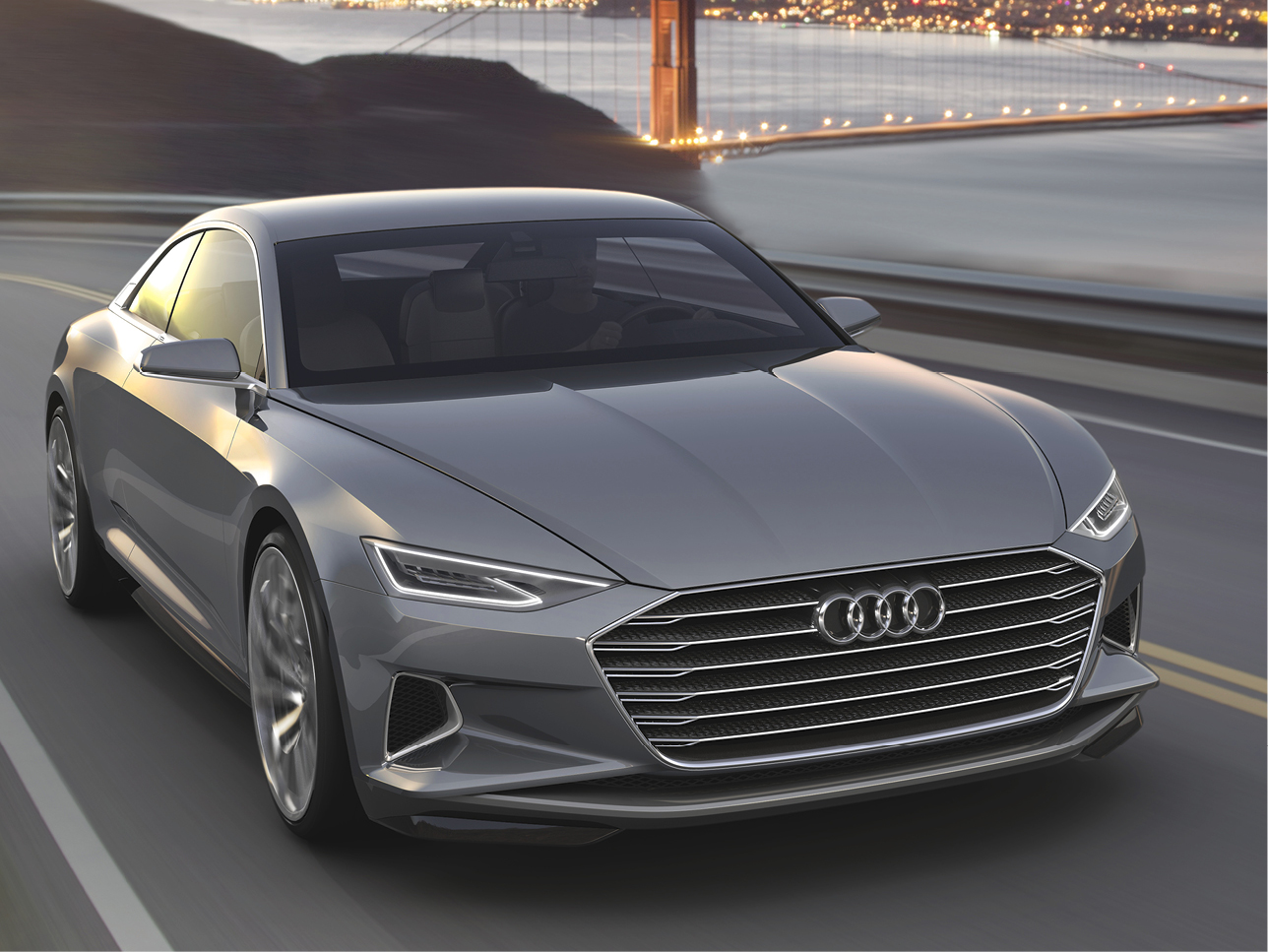Prelude to Innovation: The Audi Prologue Concept
We’ve been burned by glorious concept cars too many times.
The usual story goes like this. First, a spectacular auto-show debut. The car of your dreams. The sort of car you’d build a bigger garage for, or better yet, park in your living room. Then, one-on-one, company exec’s make big promises — nothing definite, but with a wink and a nod they imply it’ll be in showrooms by Christmas. One year goes by. The suits stop talking about it. They brush off questions. You realize you will never get to drive your dream car. You’ve been had.
Remember the BMW M1 supercar homage from the Concorso d’Eleganza at Villa d’Este in 2008? The four-door Lamborghini Estoque sedan from the Geneva show the same year? Cadillac’s 2011 Ciel concept from Pebble Beach? Or how about Jaguar’s hybrid turbine-powered C-X75 supercar concept? If any of those companies ever actually built those machines we would’ve thrown our wallets at them.
But, alas, concepts are usually just shiny things to boost a brand’s image, a bait and switch, tricking the media into giving a company free press, and tricking you into the showroom to buy something far more mundane.
All of this experience tells us not to get our hopes up for the Audi Prologue concept, unveiled earlier this year at CES and the Los Angeles auto show.
Only, Audi is upfront about the fact the Prologue is not meant for showrooms. Although it looks 95 percent production-ready, you will never get to drive it. What makes the Prologue so exciting is that it is a statement of intent — a beautiful, bold, new design direction for the entire Audi lineup. In other words, the aptly titled Prologue represents not one new Audi, but all future models.
Marc Lichte is the man tapped by Audi to pen the company’s future. It is a monumental task.
“I started working on the 1st of February, 2014, and in the last eight months we worked very hard with the team,” he said, a few minutes after the Prologue — his baby — was revealed to the world’s press in L.A., looking visibly relieved that the car was finally out in the wild.
With wild blond hair, and an impeccably tailored black suit and slate grey shirt, Lichte stood out in the usual sea of blandly corporate-looking auto executives. Judging by his personal style, we’d say Audi’s design department is in good hands.
The overall form of the Prologue is the largest clue to future models. The surface design has been refined down to its most minimalist, while some key edges have been softened to make the car seem at once futuristic, clean and warm. Audi’s signature grille remains, but now it’s wider, flanked by narrow LED headlights, giving the car a more athletic stance.
But for Lichte, the next frontier of automobile design is in the cabin.
“I see the big trend, the place where we can make the biggest step forward, like in the Prologue show car, is with the interior.” He notes that with the recent, rapid convergence of cars and consumer technology, design of human-machine interfaces have failed to keep up. One only has to try using voice control or attempt to use streaming Bluetooth audio in most any new car to see what he means.
“As you can see,” he gestures to the Prologue beside us, “there are no buttons anymore. This is a big move.” That’s typical German understatement. “Instead, we have touch displays but, and this is important for Audi, all screens will be integrated in the architecture.”
In other words, the Prologue is one concept car it is safe to get excited about. It’s not really a concept at all, rather a practical statement of design intent, not meant to be taken literally but instead as a teaser of what’s to come. It’s the appetizer before the main course; or a mission statement built of steel and glass and aluminum. Bring on the future.











